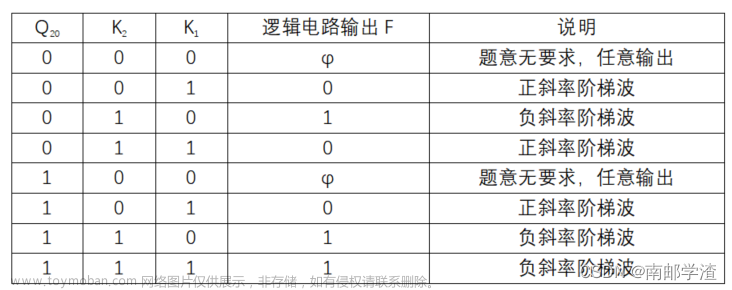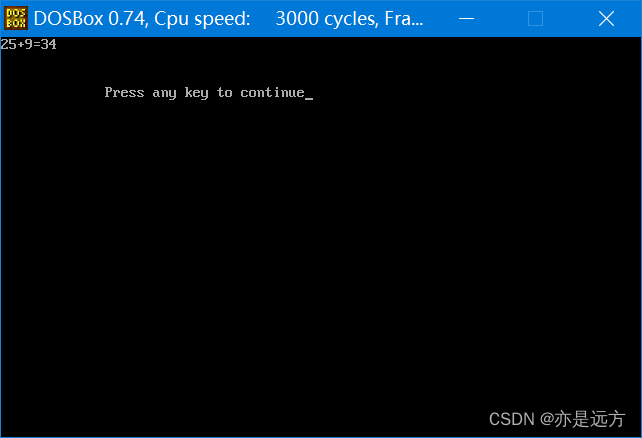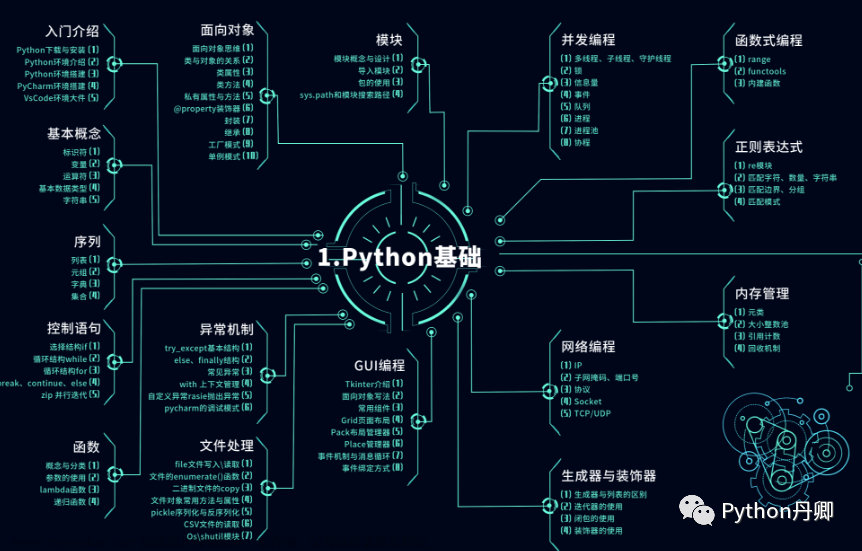1.1(1)
syms x;
m=225;
y=(log(1+x-m*x^2)-x)/(1-cos(x));
limit(y,x,0)
ans=-1
1.1(2)
syms x;
m=225;
y=(sqrt(2+m*x^2)-atan(m*x))/x;
limit(y,x,inf)
ans=15
1.2
syms x;
m=225;
y=exp(m*x)*sin(x);
s1=diff(y,x,2)
s2=diff(y,x,6);
subs(s2,x,0)
y =
exp(225*x)*sin(x)
s1 =
450*exp(225*x)*cos(x) + 50624*exp(225*x)*sin(x)
ans =
3459674532600
1.3
syms x;
m=225;
y=(x+sin(x))/(1+cos(x));
int(y,x)
f=log(1+m*x)-m*x;
int(f,0,1)
ans =
x*tan(x/2)
ans =
(226*log(226))/225 - 227/2
1.4
syms x;
m=225;
y=cos(x)*(m/200+sin(x));
taylor(y,x,0,'order',5)
ans =
(3*x^4)/64 - (2*x^3)/3 - (9*x^2)/16 + x + 9/8
1.5
x(1)=rand(1);
m=225;
for n=2:10
x(n)=sqrt(m/100+x(n-1));
end;
x
x =
0.1270 1.5417 1.9472 2.0487 2.0733 2.0793 2.0807 2.0810 2.0811 2.0811
1.6
m=225;
A=[4,2,m-2;-3,0,5;1,5,2*m];
B=[3,4,0;2,0,-3;-2,1,1];
det(A)
inv(A)
eig(A)
[P,D]=eig(A)
A/B
A\B
C=[A B]
[RC,P]=rref(C)
ans =
-735.0000
ans =
0.0340 -0.2925 -0.0136
-1.8435 -2.1456 0.9374
0.0204 0.0245 -0.0082
ans =
3.8820
-0.4202
450.5383
P =
0.7944 -0.1202 0.4468
-0.6074 -0.9927 0.0070
0.0050 0.0113 0.8946
D =
3.8820 0 0
0 -0.4202 0
0 0 450.5383
ans =
18.6400 -98.5200 -72.5600
0.0400 -1.7200 -0.1600
36.9200 -197.5600 -142.6800
ans =
-0.4558 0.1224 0.8639
-11.6966 -6.4367 7.3741
0.1265 0.0735 -0.0816
C =
4 2 223 3 4 0
-3 0 5 2 0 -3
1 5 450 -2 1 1
RC =
1.0000 0 0 -0.4558 0.1224 0.8639
0 1.0000 0 -11.6966 -6.4367 7.3741
0 0 1.0000 0.1265 0.0735 -0.0816
P =
1 2 3
1.7(1)
f.m
function y=f(x)
if x>=0&&x<=1/2
y=2*x;
elseif x>1/2&&x<=1
y=2*(1-x);
end
g.m
function y=g(x,f)
n=length(x);
for i=1:n
y(i)=f(x(i));
end
end
main
fplot(@(x)g(x,@f),[0,1])
1.7(2)
f1.m
function y1=f1(x)
if -pi<=x&&x<0
y1=x-1;
elseif 0<=x&&x<=pi
y1=x+1;
end
g1.m
function y1=g1(x,f1)
n=length(x);
for i=1:n
y1(i)=f1(x(i));
end
end
main
syms x;
fplot(@(x)g1(x,@f1),[-pi,pi])
1.8(1)
syms x;
m=225;
t=-m/25:0.1:m/25;
x=m/20*cos(t);
y=m/20*sin(t);
z=t;
plot3(x,y,z);
grid on
1.8(2)
syms x;
m=225;
t=-m/25:0.1:m/25;
x=cos(t)+t.*sin(t);
y=sin(t)-t.*cos(t);
z=-t;
plot3(x,y,z);
grid on;
1.9
syms x;
m=225;
a=[1000/m,500/m,100/m];
col=['r','b','g'];
x=linspace(-10,10);
for i=1:3
y=(1/(sqrt(2*pi).*a(i)))*exp(-x.^2/(2.*a(i).^2));
plot(x,y,'color',col(i))
hold on;
end
legend('1000','500','100')
1.10
syms x y;
ezplot('log(x^2+225*y)-x^3*y-sin(x)',[0,5,-5,5])
1.11
x=-5:0.1:5;y=x;
m=225;
[X Y]=meshgrid(x,y);
Z=m.*X.*exp(-X.^2-Y.^2);
mesh(X,Y,Z)
1.12(1)
syms x;
m=225;
ezplot('x^3+sqrt(225)*x^2+(225/3-3)*x-sqrt(225)*(1-225/27)',[-sqrt(m)/3-2,-sqrt(m)/3+2])
1.12(2)
fun.m
function y=fun(x);
y=x^3+sqrt(225)*x^2+(225/3-3)*x-sqrt(225)*(1-225/27);
Main.m
fzero(@fun,-6)
fzero(@fun,-5)
fzero(@fun,-4)
2.1(1)
dd.m
function y=dd(f2,x,n)
p=[x];
for i=2:n
p(i)=f2(p(i-1))
end
end
main
syms x;
m=225;
dd(@(x)(2*x+1)/(x-m),-10,20)
dd(@(x)(2*x+1)/(x-m),0,20)
dd(@(x)(2*x+1)/(x-m),10,20)
dd(@(x)(2*x+1)/(x-m),20,20)
2.2
syms x;
m=225;
f=inline('1-2*abs(x-1/2)');
x0=1/m;
for i=1:1:50
plot(i,f(x0),'.');
x0=f(x0);
hold on
end
hold off
2.3
Martin.m
function Martin(a,b,c,N)
f=@(x,y)(y-sign(x)*sqrt(abs(b*x-c)));
g=@(x)(a-x);
m=[0;0];
for n=1:N
m(:,n+1)=[f(m(1,n),m(2,n)),g(m(1,n))];
end
plot(m(1,:),m(2,:),'kx');
axis equal
m=225;
Martin(m,m,m,5000)
Martin(m,m,m,10000)
Martin(m,m,m,15000)
Martin(m,m,m,20000)
2.4
f=inline('(100*x+225)/(x^2+100)');
x0=5;
for i=1:1:20
x0=f(x0);
fprintf('%g,%g\n',i,x0)
end
2.5(1)
syms x;
y=sin(x);
y1=taylor(sin(x),x,'Order',2);
y2=taylor(sin(x),x,'Order',4);
y3=taylor(sin(x),x,'Order',6);
fplot([y y1 y2 y3])
xlim([-3/2*pi 3/2*pi])
grid on
legend('sin(x)','approximation of sin(x) up to O(x^1)','approximation of sin(x) up to O(x^3)','approximation of sin(x) up to O(x^5)')
2.5(2)
syms x;
y=sin(x);
y1=taylor(sin(x),x,'Order',8);
y2=taylor(sin(x),x,'Order',10);
y3=taylor(sin(x),x,'Order',12);
fplot([y y1 y2 y3])
xlim([-3/2*pi 3/2*pi])
grid on
legend('sin(x)','approximation of sin(x) up to O(x^7)','approximation of sin(x) up to O(x^9)','approximation of sin(x) up to O(x^(11))')
3.1
A=str2sym('[225,225-4;6-225,10-225]');
[P,D]=eig(A);
Q=inv(P);
syms n;
x=[1;2];
xn=p*(D.^n)*Q*x
结果
xn =
(661*2^(1/2)*4^n)/4 - (661*0^n*5^(1/2))/10 - (657*0^n*2^(1/2))/4 + (657*5^(1/2)*6^n)/10
(661*0^n*5^(1/2))/5 - (657*0^n*2^(1/2))/4 + (661*2^(1/2)*4^n)/4 - (657*5^(1/2)*6^n)/5
3.2
A=str2sym('[225,225-4;6-225,10-225]');
B=1/10*A;
[P,D]=eig(B);
Q=inv(P);
syms n;
x=[1;2];
xn=p*(D.^n)*Q*x
结果
xn =
(661*(2/5)^n*2^(1/2))/4 - (661*0^n*5^(1/2))/10 - (657*0^n*2^(1/2))/4 + (657*(3/5)^n*5^(1/2))/10
(661*0^n*5^(1/2))/5 - (657*0^n*2^(1/2))/4 + (661*(2/5)^n*2^(1/2))/4 - (657*(3/5)^n*5^(1/2))/5
3.3(1)
A=[9,5;2,6];
t=[];
for i=1:20
x=2*rand(2,1)-1;
t(length(t)+1,1:2)=x;
for j=1:40
x=A*x;
t(length(t)+1,1:2)=x;
end
end
plot(t(:,1),t(:,2),'*')
grid('on')
3.3(3)
A=[9,5;2,6]; a=[];
x=2*rand(2,1)-1;
for i=1:20
a(i,1:2)=x;
x=A*x;
end
for i=1:20
if a(i,1)==0
else t=a(i,2)/a(i,1);
fprintf('%g,%g\n',i,t);
end;end;
结论:在迭代14 次后,发现数列存在极限为0.4
3.4
m=225;
A1=[m-1,m;1-m,-m]
p=[0.5;0.5];
[P,D]=eig(A1)
for i=1:20
p(:,i+1)=A1*p(:,i);
end
fprintf('%2f,%2f\n',p)
4.1
for b=1:998
a=sqrt((b+2)^2-b^2);
if(a==floor(a))
fprintf('a=%i,b=%i,c=%i\n',a,b,b+2)
end
end
4.3
for k=1:200
for b=1:999
a=sqrt((b+k)^2-b^2);
if((a==floor(a))&gcd(gcd(a,b),(b+k))==1)fprintf('%i,',k);
break;
end
end
end
4.4
d0=9;
x=[1.5,1.8,2.4,2.8,3.4,3.7,4.2,4.7,5.3];
y=[8.9,10.1,12.4,14.3,16.2,17.8,19.6,22.0,24.1];
d1=sum(x);d2=sum(x.^2);b1=sum(y);b2=sum(y.*x);
A=[d0,d1;d1,d2];B=[b1;b2];
u=A\B;
a0=u(1)
a1=u(2)
error=sum((y-(a0+a1.*x)).^2)
4.5(1)
t=1790:10:1980;
x=[3.9,5.3,7.2,9.6,12.9,17.1,23.2,31.4,38.6,50.2,62.9,76,92,106.5,123.2,131.7,150.7,179.3,204,226.5];
t1=1790;x1=3.9;
t2=1900;x2=76.0;
A=[1,t1;1,t2];
b=[log(x1);log(x2)];
u=A\b;
x0=exp(u(1))
k=u(2)
error=sum((x0*exp(k*t)-x).^2)
4.5(2)
t=1790:10:1980;
x=[3.9,5.3,7.2,9.6,12.9,17.1,23.2,31.4,38.6,50.2,62.9,76,92,106.5,123.2,131.7,150.7,179.3,204,226.5];
d0=length(t);d1=sum(t);d2=sum(t.^2);
A=[d0,d1;d1,d2];b1=sum(log(x));
b2=sum(log(x).*t);b=[b1;b2];
u=A\b;x0=exp(u(1))
k=u(2)
error=sum((x0*exp(k*t)-x).^2)
4.6
x=1:26;
y=[1807,2001,2158,2305,2422,2601,2753,2914,3106,3303,3460,3638,3799,3971,4125,4280,4409,4560,4698,4805,4884,4948,5013,5086,5124,5163];
a=[6000,2,0.1];
f=@(a,x)a(1)./(1+a(2)*exp(-a(3)*x));
[A,resnorm]=lsqcurvefit(f,a,x,y)
t=26;
while abs(A(1)/(1+A(2)*exp(-A(3)*t))-A(1)/(1+A(2)*exp(-A(3)*(t+1))))>1
t=t+1;
end
t
A(1)/(1+A(2)*exp(-A(3)*(t+1)))
t=1:50;
plot(x,y,'*')
hold on;
plot(t,A(1)./(1+A(2)*exp(-A(3)*t)));
4.7
x=1:26;
y=[1807,2001,2158,2305,2422,2601,2753,2914,3106,3303,3460,3638,3799,3971,4125,4280,4409,4560,4698,4805,4884,4948,5013,5086,5124,5163];
a=[6000,2,0.1,0.1];
f=@(a,x)a(1)./(1+a(2)*exp(-a(3)*x-a(4)*x.^2));
[A,resnorm]=lsqcurvefit(f,a,x,y)
t=26;
while abs(A(1)/(1+A(2)*exp(-A(3)*t-A(4)*t.^2))-A(1)/(1+A(2)*exp(-A(3)*(t+1)-A(4)*(t+1).^2)))>1
t=t+1;
end
t
A(1)/(1+A(2)*exp(-A(3)*(t+1)-A(4)*(t+1).^2))
t=1:50;
plot(x,y,'*')
hold on;
plot(t,A(1)./(1+A(2)*exp(-A(3)*t-A(4)*(t+1).^2)));
4.8
x=1:27;
y=[21,65,127,281,558,923,1321,1801,2420,3125,3886,4638,5306,6028,6916,7646,8353,9049,9503,10098,10540,10910,11287,11598,11865,12086,12251];
a=[13000,2,0.1];
f=@(a,x)a(1)./(1+a(2)*exp(-a(3)*x));
[A,resnorm]=lsqcurvefit(f,a,x,y)
t=27;
while abs(A(1)/(1+A(2)*exp(-A(3)*t))-A(1)/(1+A(2)*exp(-A(3)*(t+1))))>1
t=t+1;
end
t
A(1)/(1+A(2)*exp(-A(3)*(t+1)))
t=1:50;
plot(x,y,'*')
hold on;
plot(t,A(1)./(1+A(2)*exp(-A(3)*t)));
4.9
x=1:27;
y=[21,65,127,281,558,923,1321,1801,2420,3125,3886,4638,5306,6028,6916,7646,8353,9049,9503,10098,10540,10910,11287,11598,11865,12086,12251];
a=[4,0.1,0.1];
f=@(a,x)a(1)*exp(exp(a(2)*x+a(3)));
[A,resnorm]=lsqcurvefit(f,a,x,y)
t=27;
while abs(f(A,t)-f(A,t+1))>1
t=t+1;
end
t
f(A,t+1)
t=1:50;
plot(x,y,'*')
hold on;
plot(t,f(A,t));
实验一
//散点图
plot(x,y,'.');
p=polyfit(x,y,4);
polyval(p,65)
plot(x,y,'*',x,polyval(p,x));
//模型建立文章来源:https://www.toymoban.com/news/detail-509241.html
d0=length(x);d1=sum(x);d2=sum(x.^2);
A=[d0,d1;d1,d2];
b1=sum(log(y));b2=sum(log(y).^x);
B=[b1;b2];
u=A\B,y0=exp(u(1));
k=u(2);
error=sum((y0*exp(k*x)-y).^2)
x1=1;y1=178;
x2=50;y2=50;
A=[1,x1;1,x2];
B=[log(y1);log(y2)];
u=A\B;
y0=exp(u(1))
k=u(2)
error=sum((y0*exp(k*x)-y).^2)
//数据预测文章来源地址https://www.toymoban.com/news/detail-509241.html
a=[182.6729,-0.0259];
f=@(a,x)a(1)*exp(a(2)*x);
[A,resnorm]=lsqcurvefit(f,a,x,y)
t=61;
while f(A,t)>1
t=t+1;
end
t
t=1:100;
plot(x,y,'*')
hold on;
plot(t,f(A,t));
while j<=t
j=j+1;
S=S+f(A,j);
end
S
到了这里,关于南京邮电大学数学实验最新版的文章就介绍完了。如果您还想了解更多内容,请在右上角搜索TOY模板网以前的文章或继续浏览下面的相关文章,希望大家以后多多支持TOY模板网!










